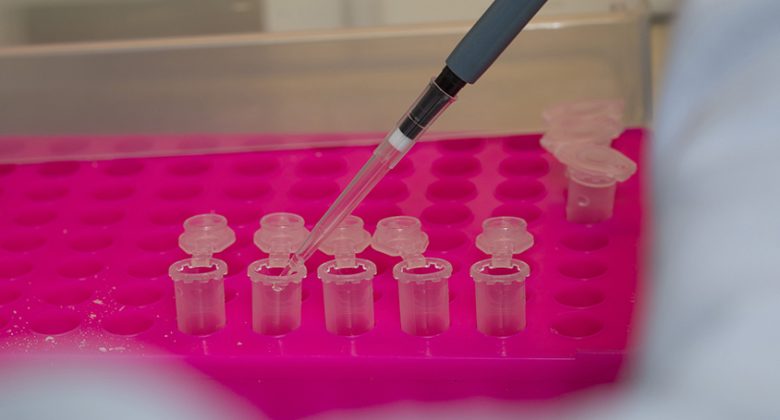MoxiMultiDoseMod: Accelerating elimination of river blindness

Onchocerca volvulus, a parasite transmitted by blackflies, produces millions of tiny larvae (microfilariae) that live in the skin but can also invade the eye, causing inflammatory reactions that result in skin conditions and, in the eye, loss of sight—known as river blindness. The disease severely disrupts quality of life, education and productivity and affects around 200 million people in Africa.
Use of ivermectin in mass drug administration campaigns has reduced the disease burden; however, better treatments are required to support the elimination of river blindness.
In 2018, the US Food and Drug Administration (FDA) approved moxidectin—the first new treatment for river blindness in 20 years. In trials in Africa, moxidectin was much better than ivermectin at clearing microfilariae from the skin and had longer-lasting effects, owing to its significantly longer half-life in the body.
The FDA approval of moxidectin was for single-dose use in adults and children of 12 years and older, but mass campaigns require repeated dosing and use in children younger than 12. The MoxiMultiDoseMod study aimed to collect data to expand the approval to include children aged 4 years and older who weigh at least 13 kg and to evaluate the safety and efficacy of annual versus biannual treatment with either moxidectin or ivermectin over three years. The study also aimed to collect further safety data for single dosing.
The project has conducted two phase 3b community‑based studies in the Democratic Republic of the Congo: one comparing annual and biannual regimens of moxidectin versus ivermectin over three years, and the other evaluating safety after a single dose. Mathematical modelling of time to elimination and cost‑effectiveness analyses were carried out alongside to provide supporting information for policymakers. The consortium also conducted a paediatric pharmacokinetic and safety study in Ghana to support label expansion for 4 to 11‑year‑old children. Combined, these studies aim to inform policy decisions for adopting moxidectin‑based treatment strategies for onchocerciasis control and elimination in endemic areas.
Dosing for both the single-dose study and the multidose phase 3b studies has concluded. While the single-dose study is completed and unblinded, the multidose study continues in follow-up, with data analysis underway.
The phase I trial (MDGH-MOX-1006), led by the University of Health and Allied Sciences in Ghana, and sponsored by the Medicines Development for Global Health (MDGH), identified the optimal moxidectin dose for children aged 4 years and older. The consortium finalised study protocols, site setup, recruitment and follow-up, study closure, data analysis (published in Parasites & Vectors), and population pharmacokinetic modelling for dose determination.
Data from this study enabled submission to the US FDA, leading to label extension for children aged 4-11 (≥13 kg) in July 2025, and to the Ghana Food and Drug Authority, resulting in market authorisation—the first African approval of a new onchocerciasis treatment. This led to addition of moxidectin to the WHO Essential Medicines List for Children (EMLc 2025) and for adults (EML 2025).
The complementary MiniMox project, jointly funded by EDCTP2 and MDGH, is developing a paediatric formulation of moxidectin intended for young children who may struggle to swallow the existing 2mg pill.
These regulatory and policy approvals mark significant progress. By enabling broader use of moxidectin, especially in children, and providing strong safety and efficacy data, the MoxiMultiDoseMod project is supporting countries in eliminating river blindness—improving lives and futures in endemic areas.
